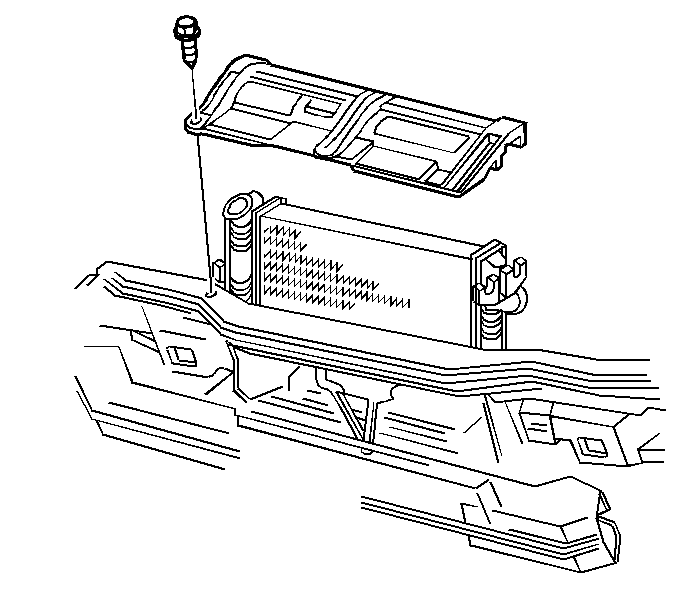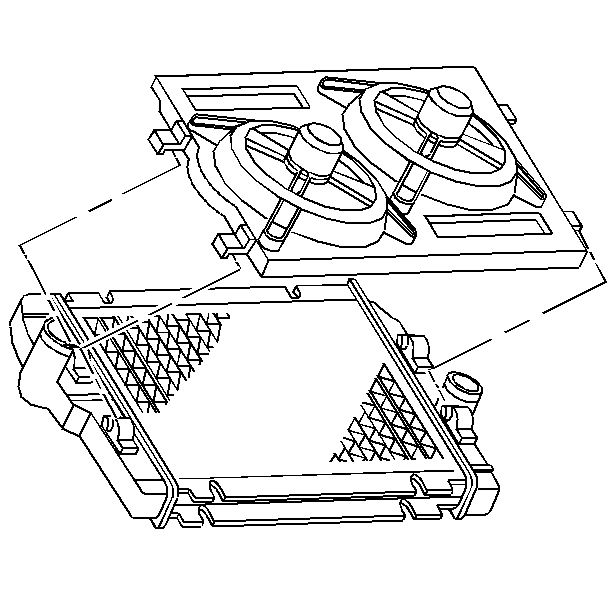Removal Procedure
Caution: Keep hands, tools, and clothing away from the electric engine coolant fans in order to help prevent personal injury. These fans are electric and can turn on whether or not the engine is running. The fans can start automatically with the ignition in the ON position.
- Remove the air intake duct and the air cleaner.
- Disconnect the coolant fan electrical connectors and the rosebud clips from the shroud.
- Remove the radiator upper mounting screws and panel.
- Remove the electric engine coolant fan. The fan will slide off of the radiator.
- Remove the fan blade nut.
- Remove the fan blade.
- Inspect for the following conditions:


Caution: If a fan blade is bent or damaged in any way, do not repair or reuse the damaged part. Always replace a bent or damaged fan blade. Fan blades that have been damaged can not be assured of proper balance and could fail and fly apart during subsequent use. This creates an extremely dangerous situation.
The fan blades must remain in proper balance. You cannot assure fan blade balance once a fan blade has been bent or damaged. A fan blade that is not in proper balance could fail and fly apart during use, creating an extremely dangerous situation.| • | Bent or cracked fan blades |
| • | Smoothness of the fan blade mating surfaces |
| • | Remove burrs or other imperfections as necessary |
Installation Procedure
- Install the fan blade.
- Install the fan blade nut.
- Install the electric engine coolant fan. The fan will slide into place on the radiator.
- Install the upper radiator mounting panel and screws.
- Connect the electrical connector and the clips.
- Install the air cleaner and the intake duct.


Tighten
Tighten the radiator upper panel mounting screws to 12 N·m
(106 lb in).
Notice: Use the correct fastener in the correct location. Replacement fasteners must be the correct part number for that application. Fasteners requiring replacement or fasteners requiring the use of thread locking compound or sealant are identified in the service procedure. Do not use paints, lubricants, or corrosion inhibitors on fasteners or fastener joint surfaces unless specified. These coatings affect fastener torque and joint clamping force and may damage the fastener. Use the correct tightening sequence and specifications when installing fasteners in order to avoid damage to parts and systems.
